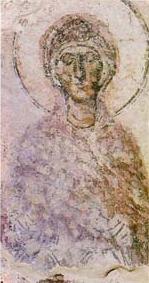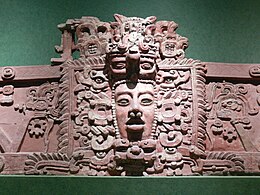
Midwifery is the health science and health profession that deals with pregnancy, childbirth, and the postpartum period, in addition to the sexual and reproductive health of women throughout their lives. In many countries, midwifery is a medical profession. A professional in midwifery is known as a midwife.
Obstetrics is the field of study concentrated on pregnancy, childbirth and the postpartum period. As a medical specialty, obstetrics is combined with gynecology under the discipline known as obstetrics and gynecology (OB/GYN), which is a surgical field.

Childbirth, also known as labour and delivery, is the ending of pregnancy where one or more babies exits the internal environment of the mother via vaginal delivery or Caesarean section. In 2019, there were about 140.11 million births globally. In the developed world most deliveries occur in hospitals, while in the developing world most were at home births.

Lotus birth is the practice of leaving the umbilical cord uncut after childbirth so that the baby is left attached to the placenta until the cord naturally separates at the umbilicus. This usually occurs within 3–10 days after birth. The practice is performed mainly for spiritual purposes, including for the perceived spiritual connection between the placenta and the newborn.
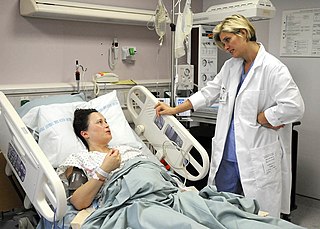
In the United States, a Certified Nurse-Midwife (CNM) is a nurse midwife who exceeds the International Confederation of Midwives essential competencies for a midwife and is also an advanced practice registered nurse, having completed registered nursing and midwifery education leading to practice as a nurse midwife and credentialing as a Certified Nurse-Midwife. CNMs provide care of women across their lifespan, including pregnancy and the postpartum period, and well woman care and birth control. Certified Nurse-Midwives are exceptionally recognized by the International Confederation of Midwives as a type of midwife in the U.S.
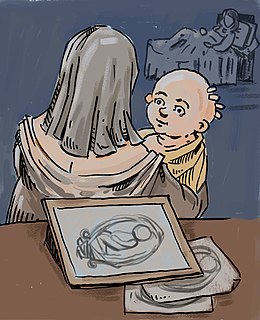
Jane Sharp was an English midwife. Her work The Midwives Book: or the Whole Art of Midwifery Discovered, published in 1671, was the first on the subject to be produced by an Englishwoman.
A birth attendant, also known as skilled birth attendant, is a health professional who provides basic and emergency care to women and their newborns during pregnancy, childbirth and the postpartum period. A birth attendant, who may be a midwife, physician, obstetrician, or nurse, is trained to be present at ("attend") childbirth, whether the delivery takes place in a health care institution or at home, to recognize and respond appropriately to medical complications, and to implement interventions to help prevent them in the first place, including through prenatal care. Different birth attendants are able to provide different levels of care.

Catharina Geertruida Schrader (1656–1746), also known as the Frisian Midwife, was a successful Dutch midwife in the Early Modern Era, known for her detailed notebooks and memoirs relating the numerous births she participated in.

Childbirth and obstetrics in Classical Antiquity were studied by the physicians of ancient Greece and Rome. Their ideas and practices during this time endured in Western medicine for centuries and many themes are seen in modern women's health. Classical Gynecology and obstetrics were originally studied and taught mainly by midwives in the ancient world, but eventually scholarly physicians of both sexes became involved as well. Obstetrics is traditionally defined as the surgical specialty dealing with the care of a woman and her offspring during pregnancy, childbirth and the puerperium (recovery). Gynecology involves the medical practices dealing with the health of women's reproductive organs and their breasts.

The Inuit are indigenous people who live in the Arctic and subarctic regions of North America. The ancestors of the present-day Inuit are culturally related to Iñupiat and Yupik, and the Aleut, who live in the Aleutian Islands of Siberia and Alaska. The word "Eskimo" has been used to encompass the Inuit and Yupik, and other indigenous Alaskan and Siberian peoples, but this usage is in decline.
Childbirth in rural Appalachia has long been a subject of concern. Infant mortality rates are higher in Appalachia than in other parts of the United States. Additionally, poor health in utero, at birth, and in childhood can contribute to poor health throughout life. The region's low income, geographic isolation, and low levels of educational attainment reduce both access to and utilization of modern medical care. Traditional medical practices, including lay midwifery, persisted longer in Appalachia than in other U.S. regions.
This article deals with childbirth in Japan, and the specific details of childbirth exclusive to Japan in relation to beliefs, attitudes and healthcare.
This article documents traditional and some modern childbirth practices in Thailand. Traditional principles are largely influenced by the folk beliefs in Central and North Thailand, and modern practices by the western medical model.
Midwives in the United States assist childbearing women during pregnancy, labor and birth, and the postpartum period. Some midwives also provide primary care for women including well-woman exams, health promotion, and disease prevention, family planning options, and care for common gynecological concerns. Before the turn of the 20th century, traditional midwives were informally trained and helped deliver almost all births. Today, midwives are professionals who must undergo formal training. Midwives in the United States formed the Midwifery Education, Regulation, and Association task force to establish a framework for midwifery.
Childbirth in Haiti follows a system of behavior determined by local beliefs, traditions and attitudes, and is also affected by economic conditions and limitations of available health care facilities.

A direct-entry midwife is a midwife who has become credentialed without first becoming a nurse. There are direct-entry midwifery programs that prepare students to become Certified Nurse Midwives (CNMs) or Certified Professional Midwives (CPMs). Certified Professional Midwives are known for being "more natural and less intervention oriented." In other words, these midwives typically work outside of the hospital setting in homes and birth centers and do not employ methods for childbirth that physicians in hospitals commonly use such as caesarean section, forceps and other types of equipment and drugs.
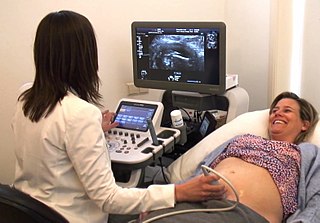
A midwife is a health professional who cares for mothers and newborns around childbirth, a specialization known as midwifery.

A nurse midwife is both a nurse and a midwife, having completed nursing and midwifery education leading to practice as a nurse midwife and sometimes credentialed in the specialty. Nurse midwives provide care of women across the lifespan, including during pregnancy and the postpartum period, and well woman care and birth control.
In its early history, Mexico was occupied by a large number of indigenous tribes such as the Mayans and Aztecs. In the 16th century, Spain colonized New Spain and took over the land from the indigenous peoples. Though it is now an independent nation, Mexico retains much of the cultural influence of Spain, including its official religion of Catholicism, the Spanish language, and the importance of machismo - the belief that men are superior to women. Mexico also retains much of the traditional beliefs of the indigenous peoples who first occupied the country. Besides Spanish, there are over one hundred different languages spoken in the country today. As a result, the current medical system involves a mix of traditional and Western medicinal techniques.
Sobada is a therapeutic massage that was developed in the Central and South America. Sobada is divided into two general categories. One type of sobada, which is done by midwives, helps with the reproductive cycle when a woman is pregnant. The second type of sobada, which is performed by los sobadores, or people who specialize in sobada, helps to reposition organs or parts of the body that are considered out of alignment. Sobada is part of the system of values and is part of the local language. There is a known difference between what sobada is and what a light massage is.

